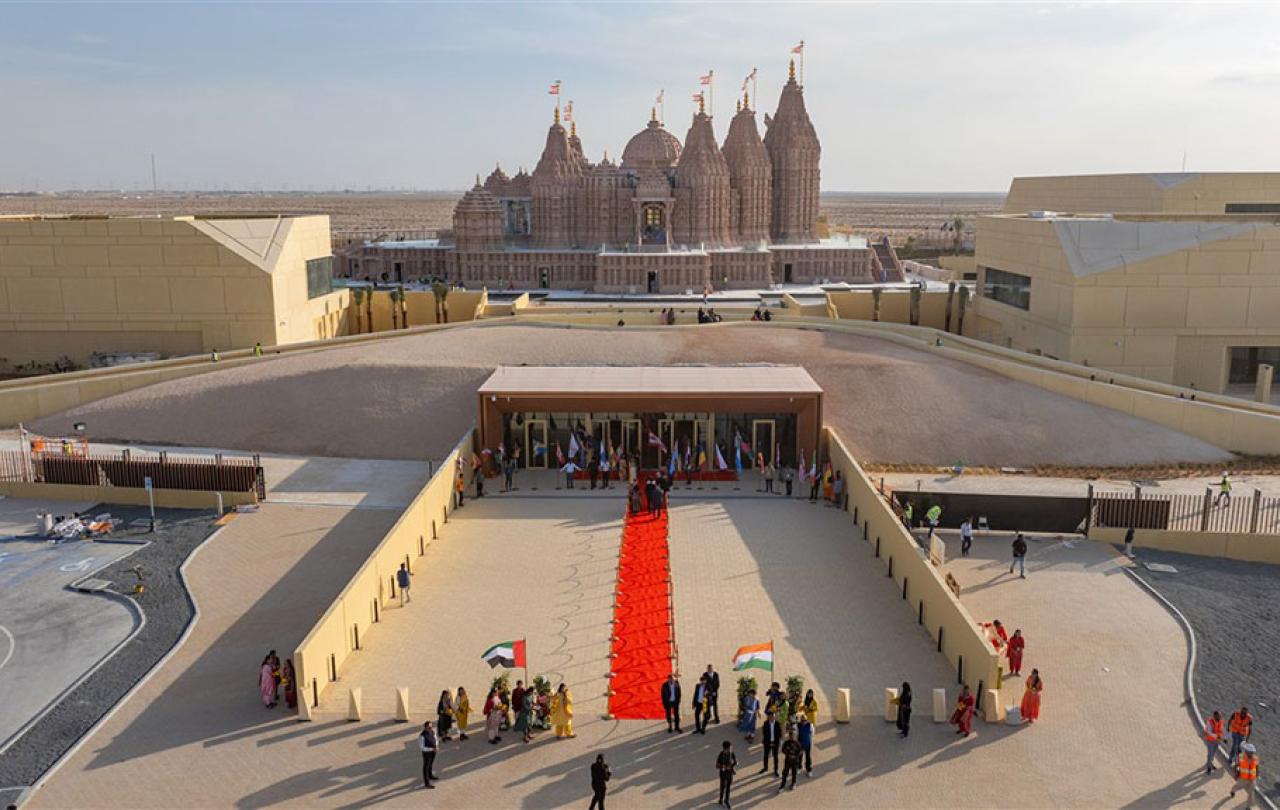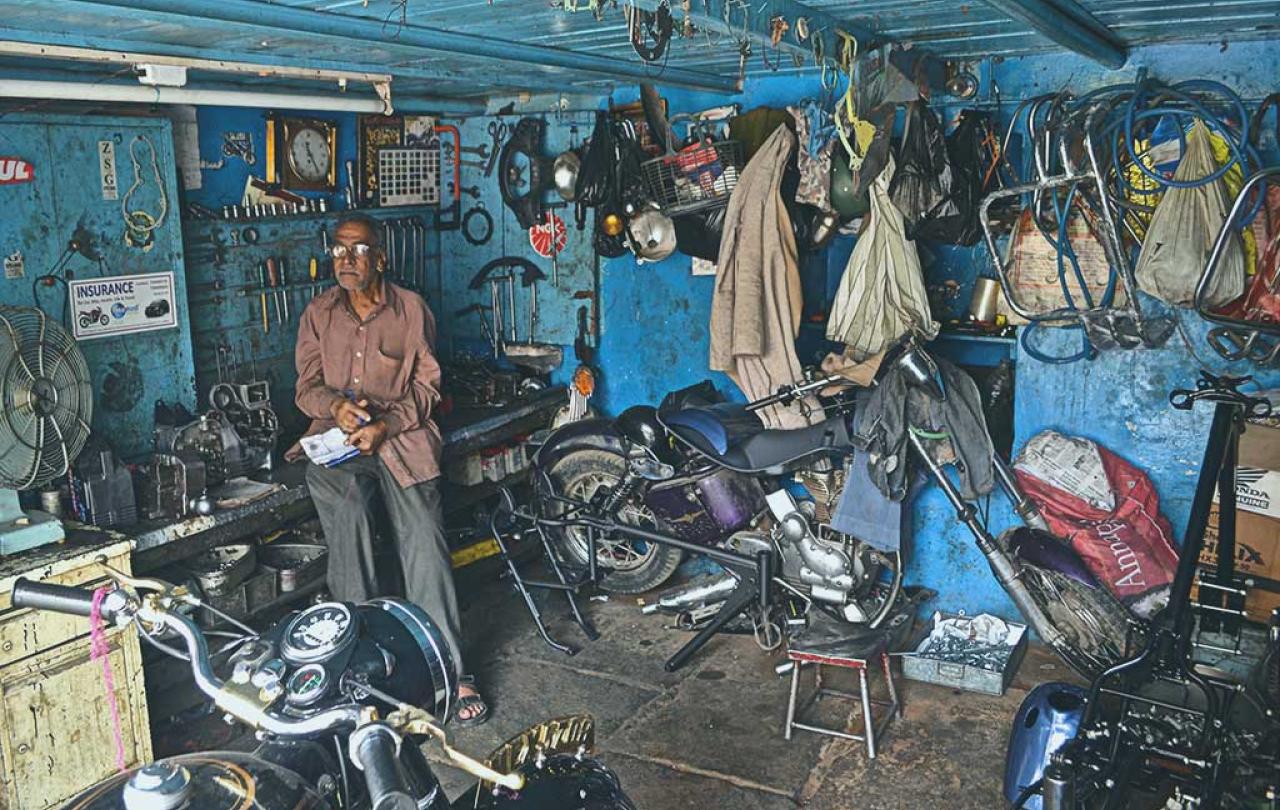
When Rishi Sunak was on the verge of becoming the UK’s first Asian Hindu Prime Minister much of the British media was hounding him about his extraordinary wealth . At the time, the BBC’s North America editor Jon Sopel had just returned to London from Washington DC and commented on Twitter/X that the media commentary on Mr. Sunak’s wealth were ‘very British’ in nature. After considerable time covering the America’s financially seismic politics we might sympathise with Mr. Sopel’s diagnosis.
However, the question of money and wealth in politics or elsewhere for that matter is not just a cultural divide between Britain and America. It is a significant religious divide between those of the Christian faith and those from a Hindu background.
A startling truth that many Christians is that in Christianity you can’t serve God and Money. In Hinduism, you can. In fact, you must! Dharma (moral duty), Artha (wealth), Kama (pleasure) and Moksha (liberation of the Self from birth and rebirth) are the four ‘spiritual paths’ all Hindus of all traditions must pursue (unless one decides to take a more monastic route of course)!
PM Sunak could have shot back at the press by simply saying, ‘could you please not offend my Hindu faith!’ Frankly, he would have been one hundred percent right. And as a minority faith believer in today’s United Kingdom that volley response to a hawkish media would have halted them in their tracks. For better or worse, Christian political leaders can’t get away with that sort of thing…
Wealth is a sign that ‘God is on your side.’ The only catch I must hasten to add is that when money is asked from a Hindu, one must not hesitate to give it away.
It is true, along with all the intricately meditative, contemplative and devotional teachings across various Hindu traditions, nearly every single Hindu Guru will encourage and guide their followers to pursue money. After all, that’s how one builds beautiful temples and grows the Hindu faith. The Swaminarayan Hindu Movement for example have spent close to $700m building temples in North America over the last twenty years alone. Temples and shrines line the streets and sideways of India supplying its one billion Hindus plenty of space for belonging, prayer and worship.
The Hindu concept of a temple to house the images of god is a Greek import into Hinduism during the fourth century AD. It is now a central spiritual pillar across all Hindu religions and money plays a key spiritual role lying primarily on the shoulders of the Hindu believer.
Temples tend to attract more wealth. The famous Tirupati Balaji Temple in South India’s Andhra Pradesh State has a net worth more than the market capitalisation of companies like Nestle, Wipro or Indian Oil Corporation.
Yes, it can be very transactional for Hindus at times but then there is a beautiful reminder in the minds of many Hindus that says, “it’s not mine anyway.”
Tithing is a huge part of a devout Hindu’s life and so making money to give away is equally important. Wealth is a sign that ‘God is on your side.’ The only catch is that when money is asked from a Hindu, she must not hesitate to give it away. That’s the spiritual trick that reveals the attachment or detachment to money in a devout Hindu’s life. This spiritual test almost gives the guru the upper hand. His or her work will always flourish.
In my life as a Hindu monk I have witnessed time and again how Hindus have been struck by the selfless giving of Christians and more so to causes that would never cross the mind of a Hindu.
Giving to the downtrodden and marginalised in India is a very Christian action as it contradicts how a Hindu must play out their karma if they are destined to be poor or destitute. Hindus prefer to give to temples and earn god's direct blessing. Yes, it can be very transactional for Hindus at times but then there is a beautiful reminder in the minds of many Hindus that says, “it’s not mine anyway.”
Every Hindu seeks Moksha (a liberation of the Self from birth and rebirth), not Salvation. One of the four key practices for that ultimate liberation from birth and rebirth is Vairagya which is to remain detached from earthly pleasures. Hindu doctrine does not say one can’t enjoy wealth but does say that if it is not in your possession one day for any reason one mustn’t lose Stita Pragnata (a still and balanced mind). Staying unaffected is the aim. If you are unaffected at the loss, your Atma (the Self) is very much on the path to Moksha.
Famous stories of detachment to wealth are often woven into Hindu teachings as a healthy reminder. The ancient Hindu king Janaka sat rooted to the spot listening with rapt attention to his guru whilst his palace in the famous city of Mithila south of the Himalayas was burning. Ironically, it was the monks that stood up and ran to fetch their burning robes and food bowls revealing how detachment is an internal affair.
Whilst money might deal with the ideas of detachment and attachment in a Hindu world it doesn’t really deal with the deep longing in the human heart which is to be able to trust in someone who is a good Father for all one’s needs. The deep but unknown longing that God has your back and will provide even when you falter or fail is never fulfilled. This is where and when Karma puts the final nail in hope’s coffin for a Hindu and this is why there is always a sense of restlessness and striving simmering underneath the face of spiritual detachment at all times. “All my worth in God’s eyes and man lies in this accumulation of wealth” is quite a common but subtle heart posture. This is not articulated in the mind of course but it is the engine driving the relentless hard work.
Yes, Indians are a very successful community at every level of western society. The culture of family and frugality plays a good role in that success but if we were carefully and respectfully to place a microscope over the heart and mind of a Hindu the intricate mechanism behind the ‘success’ is running on the pistons of striving and performance. It is a tiring and gruelling inner world.
Detachment from the world or money does not bring the rest, joy and hope that the heart truly cries and craves.
Jesus often talks about money because it’s probably the best tool for revealing the heart. It highlights the obvious pitfalls of the prosperity gospel whilst equally but more subtly exposes the false spiritual facade of the poverty gospel. “It’s very spiritual to be poor” can sneak into our hearts under the guise of humility quite often. Apologising for the Father’s blessing in life is one of many signs of the poverty gospel. To revert back to Jon Sopel's transatlantic perspective, the prosperity gospel is quite obvious in parts of the American church but the poverty gospel not so much. And, in my view it is quietly hidden in parts of the British church.
You can give money because you are genuinely generous while others may part with money because they are guilty for having it! And yes, there are those of us who give away money because we are simply bad stewards of money. It all looks very much the same but Jesus is interested in the heart and what this profound tool amplifies in that deep and protected place.
One very awkward question Hindus tend to ask a Christian when they feel a level of trust has been developed is ”why aren’t you financially blessed by your God?” It’s a fair question now that we know a Hindu’s general worldview on the matter. A Christian can answer by offering the security and sense of significance that Christ offers not just intellectually through eastern-style self-talk but by His Spirit who dwells in the heart of a believer. If wealth is added to that, so be it but one doesn’t chase after or apologise for it.
Detachment from the world or money does not bring the rest, joy and hope that the heart truly cries and craves. An “unaffected mind” brought forth with striving and performance is not the same as the deep Peace th that Jesus wants to offer.
When Mahatma Gandhi was fasting during his ‘Quit India Movement’ he wasn’t fasting in the Hindu context of immolation of the body’s desires. Instead he fasted for those in the British administration, who he believed from his knowledge of the Christian faith, were slaves to money and power. He made this very clear in a letter to Lord Irwin who was the Viceroy of India during the Independence struggle.
He knew that Christians should have one master uncoupled from mammon and if he used Christian principles against a civilisation based upon the message of the Messiah he would stand a far better chance. A Hindu was fasting, for a Christian result. In short, he was fasting in the most un-Hindu way…
Prime Minister Rishi Sunak recently in January 2024 revealed his weekly fasting routine in the aim of a ‘balanced lifestyle’ so that he can indulge in ‘sugary treats later in the week.’ Not quite the same as Gandhi’s desired result but still a devout Hindu at that and quite unapologetic about his wealth.





